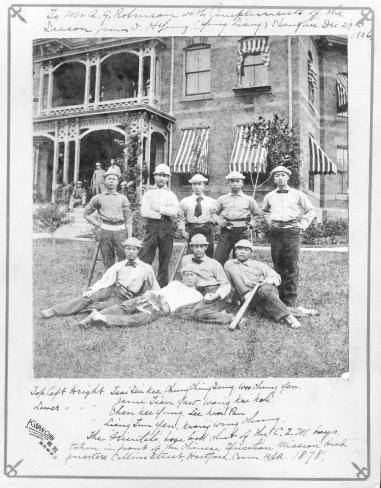 | ||
The Chinese Educational Mission or CEM (1872–1881) was the pioneering but frustrated attempt by reform minded officials of the Qing dynasty to educate a group of 120 Chinese students in the United States.
In 1871, Yung Wing, himself the first Chinese graduate of Yale University, persuaded the Chinese government to send supervised groups of young Chinese to the United States to study Western science and engineering. With the government's eventual approval, he organized what came to be known as the Chinese Educational Mission, which included 120 students, some under the age of ten, to study in the New England region of the United States beginning in 1872. The boys arrived in several detachments, lived with American families in Hartford, Connecticut, and after graduating high school, went on to college, especially at Yale. When a new supervisory official arrived, he found that they had adopted many American customs, such as playing baseball, and ended the mission in 1881. When the boys returned to China, they were confined and interrogated.
The influential official Huang Zunxian wrote a poem which admitted that the students had lived luxurious lives and become Americanized, but lamented the lost opportunity:
Unfortunately, in the Imperial AcademyThe curriculum has not included Western learning.Withal, on the promotion of scienceNow depends the future of the nation.A decade's effort in training youthsWill lay the foundation for a century's wealth and strength.Many of the students later returned to China and made significant contributions to China's civil services, engineering, and the sciences. Prominent students on the mission included Tang Shaoyi, Tsai Ting Kan (Cai Tinggan), and Tien You Jeme (Zhan Tianyou).
